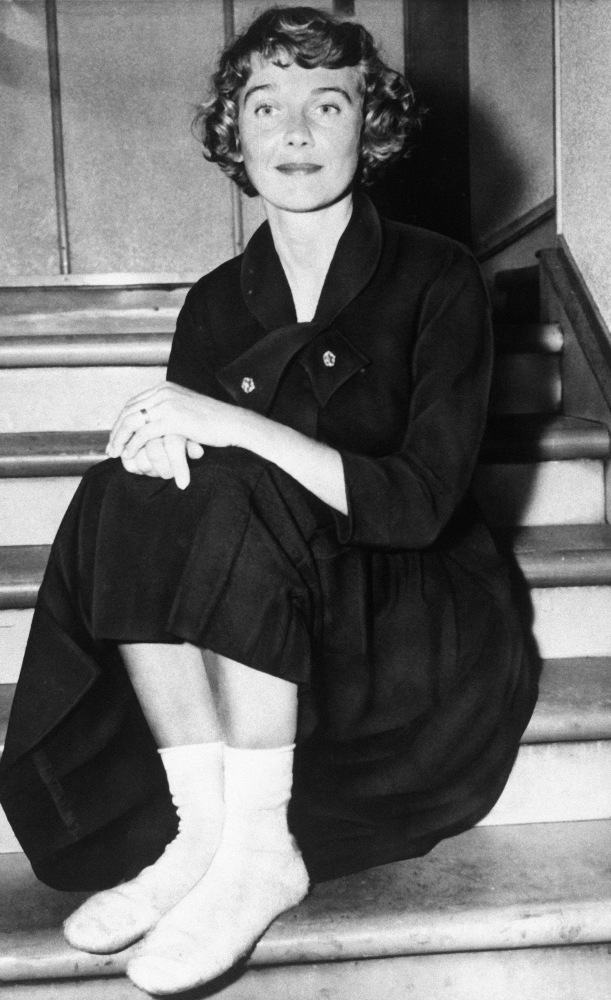When actress Betsy Drake gave up her career to become a housewife, the role never really took.
The husband she sought so desperately to please was Cary Grant. And though he was deemed one of the world’s most desirable men, he “often fell asleep after dinner and preferred television to talking with me,” she said in a filing for her 1962 divorce.
His infatuation with Sophia Loren didn’t help, but Drake’s hopes for a conventional life with him might have been a stretch in the first place.
She had a tormented childhood, at one point living in a Chicago hotel suite with a nanny while her wealthy parents lived in another hotel. Seeking answers through psychotherapy, she was an early devotee of LSD and introduced Grant to the hallucinogenic drug. She ultimately turned her back on Hollywood, studying to become a children’s therapist specializing in psychodrama.
“I divorced the whole town as well as Cary – and they divorced me,” she told the Los Angeles Times in 1978.
Drake died Oct. 27 at her home in London. She was 92.
Her death was confirmed by Michael Schreiber, curator for the estate of artist Bernard Parlin, a close friend of Drake’s who died last year.
She never remarried and had no children.
Drake appeared in about 10 films. Her first was “Every Girl Should Be Married” (1948), a comedy in which her character devises outlandish schemes to hook Grant as a husband. Her last was “Clarence, the Cross-Eyed Lion” (1965).
Others include “Dancing in the Dark (1949),” “Pretty Baby” (1950), and “Will Success Spoil Rock Hunter?” (1957). She also worked with Grant in “Room for One More” (1952).
For years during her marriage, she chose not to work.
“I couldn’t be an actress and a housewife too,” she told gossip columnist Hedda Hopper in 1965, three years after her divorce. “Because of Cary I became a good cook, and I think I’ll be a marvelous wife for someone else.”
Born in Paris on Sept. 11, 1923, Drake was the daughter of American expatriates. Her father, Carlos Drake, wrote short stories and ran an exclusive travel agency.
Hit hard by the 1929 stock market crash, the Drakes returned to the family businesses, the Drake and Blackstone hotels in Chicago. She attended 12 schools around the U.S. before becoming an actress and model in her late teens.
In 1947, she drew Grant’s attention when she performed onstage in London as the lead in director Elia Kazan’s “Deep Are the Roots.” Their rapport grew when they returned to the U.S. as fellow passengers on the Queen Mary.
Their 1949 marriage in Palm Springs, Calif., was front-page news, with Howard Hughes serving as best man. It would be the most durable of Grant’s five marriages.
After they separated in 1958, Drake started seeing a Beverly Hills psychotherapist, who prescribed therapy with LSD, which was legal at the time.
In her first session, she experienced the pain of her own birth.
“Enthused by what she considered an incredible experience, Betsy went home and called her mother, with whom she hadn’t spoken in a decade,” Vanity Fair magazine reported in 2010.
“‘I told her, ‘I love you,’ and after all that time, she just said, ‘Of course you do, darling,’ and hung up.”
Drake talked Grant into similar sessions and he came away a true believer, using the drug more than 100 times.
Copy the Story LinkSend questions/comments to the editors.



Success. Please wait for the page to reload. If the page does not reload within 5 seconds, please refresh the page.
Enter your email and password to access comments.
Hi, to comment on stories you must . This profile is in addition to your subscription and website login.
Already have a commenting profile? .
Invalid username/password.
Please check your email to confirm and complete your registration.
Only subscribers are eligible to post comments. Please subscribe or login first for digital access. Here’s why.
Use the form below to reset your password. When you've submitted your account email, we will send an email with a reset code.